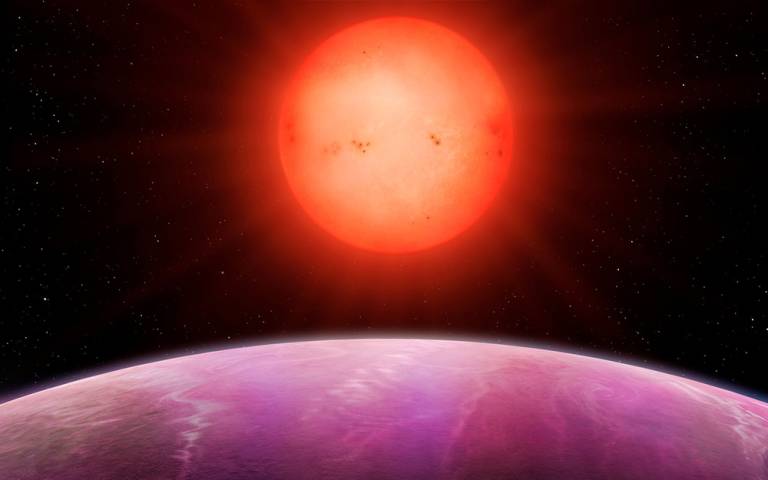
Credits: NASA, ESA, and Joseph Olmsted (STScI)
A young planet whirling around a petulant red dwarf star is changing in unpredictable ways orbit-by-orbit...
Read More

A young planet whirling around a petulant red dwarf star is changing in unpredictable ways orbit-by-orbit...
Read More
When our sun reaches the end of its life, it will expand to 100 times its current size, enveloping the Earth. Many planets in other solar systems face a similar doom as their host stars grow old. But not all hope is lost, as astronomers from the University of Hawaiʻi Institute for Astronomy (UH IfA) have made the remarkable discovery of a planet’s survival after what should have been certain demise at the hands of its sun.
The Jupiter-like planet 8 UMi b, officially named Halla, orbits the red giant star Baekdu (8 UMi) at only half the distance separating the Earth and the sun...
Read More
A study led by researchers of the University of Liège and the CSIC—using observations from NASA’s TESS telescope—presents the detection of a system of two planets slightly larger than Earth orbiting a cold star in a synchronized dance. Named TOI-2096, the system is located 150 light-years from Earth.
The discovery is the result of a close collaboration between European and American universities and was made possible by the US space mission TESS (Transiting Exoplanet Survey Satellite), which aims to find planets orbiting nearby bright stars.
“TESS is conducting an all-sky survey using the transit method, that is, monitoring the stellar brightness of thousands of stars in the search for a slight dimming, ...
Read More
Stars with less than half the mass of our sun are able to host giant Jupiter-style planets, in conflict with the most widely accepted theory of how such planets form, according to a new study led by UCL (University College London) and University of Warwick researchers.
Gas giants, like other planets, form from disks of material surrounding young stars. According to core accretion theory, they first form a core of rock, ice and other heavy solids, attracting an outer layer of gas once this core is sufficiently massive (about 15 to 20 times that of Earth).
However, low-mass stars have low-mass disks that, models predict, would not provide enough material to form a gas giant in this way, or at least not quickly enough before the disk breaks up.
In the study, accepted for publica...
Read More
Recent Comments